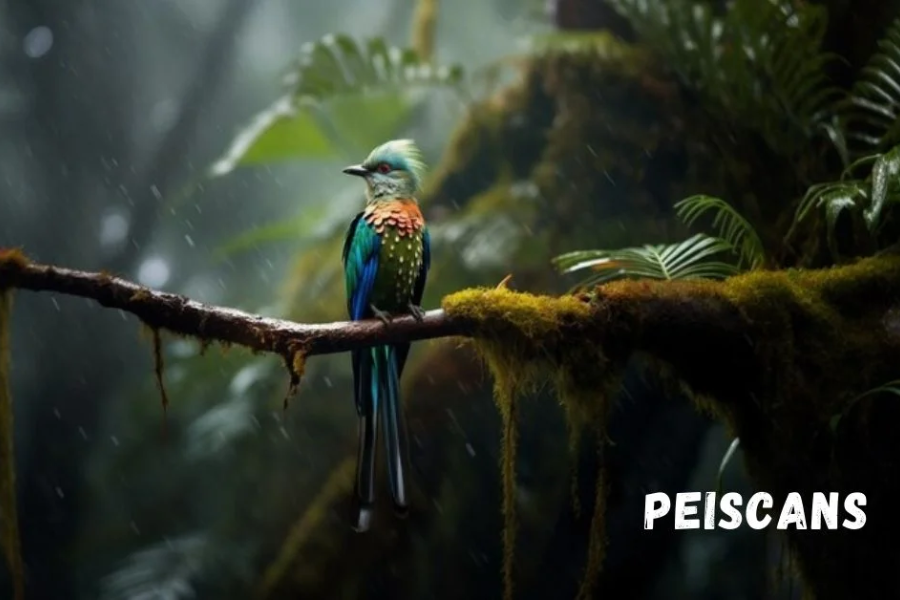An Introduction to These Unusual Animals: Meet the Peiscans
Greetings from the amazing world of peiscans! Not only are these unusual animals fascinating to see, but they are also a vital component of our ecology. Many people who like the outdoors have become intrigued by peiscans because of their unique physical characteristics and intriguing mannerisms. This thorough guide will teach you all you need to know about peiscans, from their physical characteristics and habitats to their nutrition, social relationships, and conservation status, if you’re fascinated by animals and the marvels of nature. Together, let’s go off on this fascinating adventure and explore the world of these amazing creatures!
Physical Characteristics of Peiscans
Peiscans are incredibly captivating animals that stand out for their vivid and striking look. Because of their streamlined and slender bodies, which are well suited for both terrestrial and aquatic existence, they are adaptable residents of a wide range of environments.
The plumage of peiscans, which varies in color from brilliant yellow to deep blue and has beautiful patterns that add to its allure, is one of their most distinguishing characteristics. Their attraction in the wild is increased by the way their colors interact to operate as a defensive mechanism and to draw in potential mates.
Their long wings allow them to soar gracefully above the landscape, giving them a commanding presence in the air. Coupled with sharp, focused eyes, peiscans possess exceptional vision, which enables them to spot prey from impressive distances. Their webbed feet make them adept swimmers, allowing them to move swiftly through water while also providing stability when walking on rocky or marshy terrains.
Their beaks are another distinguishing feature—long, curved, and strong, perfect for fishing and scavenging. Every aspect of a peiscan’s anatomy serves a distinct purpose in helping them thrive in their environment, showcasing nature’s ingenuity in designing creatures so well-equipped for survival.
Habitat and Distribution of Peiscans
Peiscans have an interesting distribution across various ecosystems, primarily thriving in coastal regions and riverbanks where freshwater meets saltwater. These habitats provide them with the ideal balance of shelter and food sources, such as fish and crustaceans.
Peiscans often nest on rocky outcrops, sandy beaches, and cliffs in temperate areas. Their native range shows how adaptable they are to many temperatures, extending from the northern hemisphere down to tropical zones. A tribute to their adaptability and endurance to climatic changes is the fact that several species can migrate during the winter months, towards warmer seas.
Peiscans’ habitats are as varied as their activity, and people who see them in the wild are always enthralled by them, whether they are nesting along coastal cliffs or feeding in marshy marshes.
Diet and Eating Habits of Peiscans
Peiscans are recognized for their omnivorous diet, which mostly consists of aquatic vegetation, crabs, and tiny fish. Their varied food gives them the adaptability to survive all year round, enabling them to easily adapt to various settings.
Their hunting strategy is among the most amazing features of their eating habits. Peiscans have excellent underwater diving skills and can notice even the smallest movement with their keen eyesight. Their curved beaks make grabbing slick fish easy, and their webbed feet help them move through the water.
In addition to active hunting, peiscans are opportunistic feeders, often scavenging or stealing food from other animals when necessary. This adaptable approach to food collection reflects their ability to thrive in various environments, making them versatile hunters.
Interestingly, their diet also changes with the seasons. When certain types of food become scarce, peiscans shift their focus to other available resources. This flexibility in their eating habits ensures they maintain a balanced diet, regardless of environmental changes.
Behaviors and Social Interactions
Peiscans are highly social creatures, often living in small tight-knit groups that foster strong bonds among members. Their social structure is intricate, with communication primarily occurring through a combination of vocalizations and body language. They can better coordinate behaviors like mating, hunting, and territorial defense thanks to these interactions.
Playful actions like pretend fighting and chase games provide a purpose beyond amusement; they reinforce social bonds among group members. When it comes to defending territory, peiscans can display surprising aggression, especially when resources are scarce. Hierarchies within groups are common, with dominant individuals asserting control over prime feeding areas.
One of the most touching aspects of their social lives is their approach to parenting. Peiscans exhibit cooperative breeding behaviors, with adults taking turns to care for their young. This cooperative system ensures that chicks receive the protection and nourishment they need to survive.
Reproduction and Life Cycle of Peiscans
The reproductive cycle of peiscans begins with elaborate courtship rituals that are as mesmerizing as their plumage. Males perform intricate displays, showcasing their vibrant feathers and unique calls to attract a mate. These courtship displays often take place over several days, with males investing significant energy into winning over a female.
After mating, the female deposits three to five eggs in a carefully chosen nest, which is typically concealed in bushes or rocky nooks to keep predators away. The chicks hatch after about three weeks of incubation and are mostly reliant on their parents for care.
The young are fed and shielded by both parents alternately, which helps to ensure their survival throughout the delicate early stages of life. At six weeks or so, the chicks start to fly, but they stay with their parents for a little while longer to acquire the necessary survival abilities.
Threats and Conservation Status
Like many wildlife species, peiscans face several threats that put their populations at risk. The most significant threat is habitat loss, primarily due to urban development and the draining of wetlands for agriculture. As these critical environments disappear, peiscans lose vital breeding and feeding grounds.
Another major issue is pollution, especially in streams where pollutants and chemicals can damage peiscan adults as well as their young. These animals have additional difficulties due to the disruption in food availability and migratory patterns caused by climate change.
In other areas, illicit hunting and poaching persist despite legislation aimed at protecting them, endangering the local populace even more.
Through habitat restoration and legislative safeguards, conservation organizations are making great efforts to safeguard peiscans. Through increasing public awareness of the need of protecting these unusual species, conservationists want to stop more reductions in peiscan numbers. Monitoring systems assist make sure that prompt action is made to conserve these amazing species by keeping an eye on population changes.
How to Observe Peiscans in the Wild
Observing peiscans in their natural habitat can be a rewarding experience for any wildlife enthusiast. To increase your chances of spotting them, visit lakes, rivers, or wetlands—the ideal locations for peiscan activity.
When peiscans are most active, which is in the early morning or late afternoon, these are the greatest times to see them. Having a set of binoculars with you might allow you to observe more closely without upsetting them.
Due to their great degree of sensitivity to their environment, the ideal way to observe peiscans during their hunting, play, and social interactions is to choose a calm area and stay still. Even in situations when they are concealed from view, you may still discover them by listening to their distinctive sounds.
Maintaining a safe distance and avoiding loud noises that might startle wildlife are important ways to show respect for its environment when watching it. Seeing these incredible creatures in their own habitat is a once-in-a-lifetime chance to gain a deeper understanding of the wonders of nature.
Fun Facts about Peiscans
Peiscans have a unique blend of intriguing characteristics that set them apart from other breeds. They can communicate emotions or blend in with their surroundings since their plumage color may change according on their attitude and circumstances.
Peiscans have a social structure that is equally fascinating; they frequently establish close-knit colonies and participate in cooperative hunting techniques. This practice guarantees that each person in the group receives a portion of the meal.
Additionally, peiscans have an extraordinary sense of hearing that enables them to recognize even the smallest noises from a great distance, which is helpful for both hunting and evading predators.
In addition, peiscans are known for their playful nature. They often engage in aerial acrobatics, especially during courtship displays, showcasing their grace and agility. Some individuals have been recorded living up to 20 years in the wild, making them long-lived members of their ecosystem.
Conclusion
Peiscans are incredibly intriguing animals that pique our curiosity with their distinct physical traits, social dynamics, and habits. They are an essential component of the natural world because of their capacity to adapt to a wide range of settings and their significant contribution to preserving ecological equilibrium. The movement to save peiscans and their habitats is gaining traction as more people become aware of the difficulties these animals face.
Knowing about peiscans can help you appreciate nature’s beauties whether if you’re just a casual nature lover or an expert wildlife observer. We can guarantee that future generations will be motivated by these amazing creatures’ elegance and beauty in the wild by honoring and safeguarding them.






